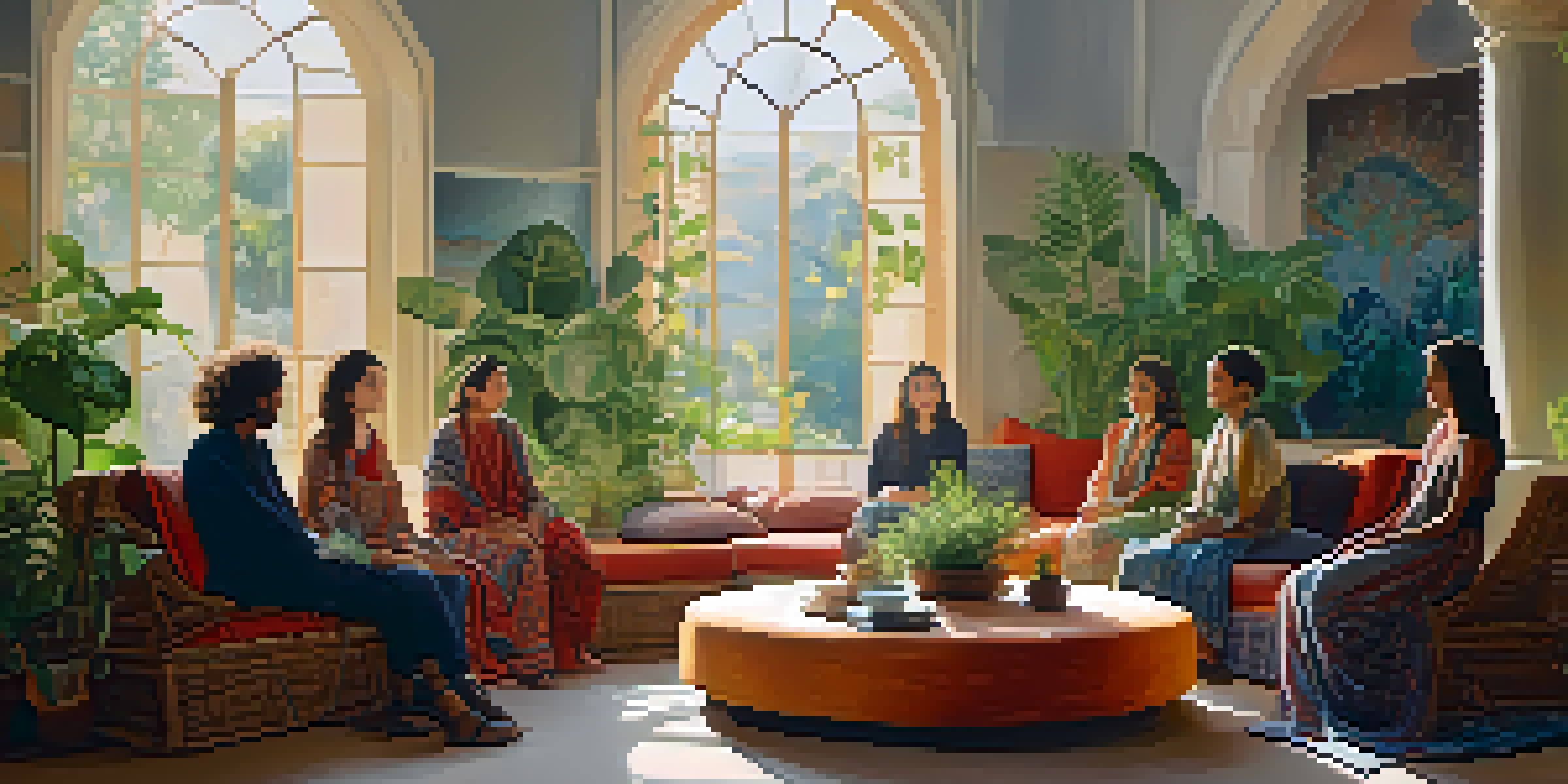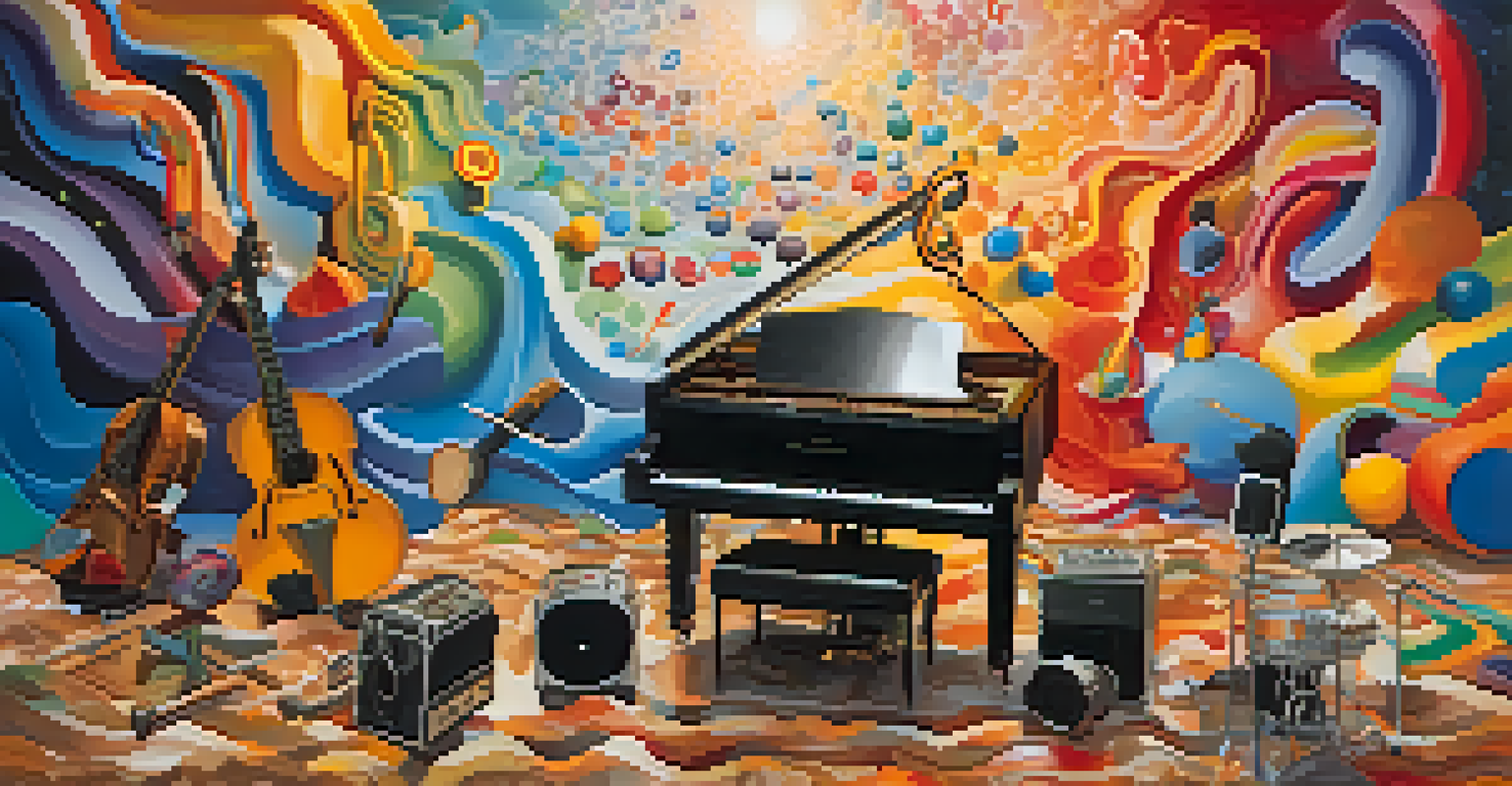Shared Experiences: Entheogens in Group Settings

Understanding Entheogens and Their Role in Group Settings
Entheogens, often referred to as psychedelics, are substances that can alter perception and consciousness. These compounds have been used for centuries in various cultures for spiritual and therapeutic purposes. In group settings, entheogens can create a unique atmosphere where individuals bond over shared experiences, often leading to deeper connections and insights.
The experience of connection is the most potent healing tool we have.
When people come together under the influence of entheogens, the environment can shift dramatically. Participants may find themselves sharing thoughts and feelings that they might typically keep private. This openness can foster a sense of community and understanding, making the experience even more profound.
Moreover, the shared journey through altered states can enhance empathy and compassion among group members. As individuals navigate their own inner landscapes, they often encounter reflections of each other, leading to insights that transcend individual experiences. This interconnectedness is a powerful aspect of group entheogen sessions.
Setting the Stage: Creating a Safe Group Environment
A crucial element of a successful entheogen experience in a group setting is the environment. Creating a safe, supportive space where participants feel comfortable is essential for fostering openness. This includes choosing a calm location, ensuring privacy, and establishing ground rules for sharing and interaction.

Setting intentions before the experience can also help align the group's focus. When everyone understands the purpose of the session—be it healing, exploration, or connection—they can work together towards a shared goal. This alignment can significantly enhance the group dynamic and collective experience.
Entheogens Foster Group Connections
Shared experiences under the influence of entheogens can create deeper bonds and insights among participants.
Additionally, having experienced facilitators can provide guidance and support throughout the journey. These individuals can help navigate challenging moments and encourage participants to express themselves freely. With the right support, the group can create a nurturing environment that enhances the overall experience.
The Power of Shared Insights During Group Experiences
One of the most enriching aspects of group entheogen experiences is the sharing of insights. As participants process their journeys, they often uncover profound truths about themselves and their relationships. When these insights are shared, they can resonate deeply with others, sparking new understandings and perspectives.
Psychedelics can allow us to see ourselves and each other more clearly, fostering empathy and understanding.
For example, someone may have a breakthrough about their fears, which inspires another participant to confront their own anxieties. This ripple effect can create a chain reaction of healing and growth within the group. It’s often through these shared narratives that participants feel more connected to one another.
Moreover, these insights can extend beyond the session itself. Many individuals leave with a renewed sense of purpose or direction, influenced by the collective wisdom of the group. This shared knowledge often serves as a foundation for ongoing discussions and personal development long after the experience.
Navigating Challenges: Embracing Vulnerability in Groups
While group entheogen experiences can be incredibly rewarding, they can also present challenges. As individuals confront their vulnerabilities, it's not uncommon for emotions to surface—sometimes in overwhelming ways. This is where the strength of the group dynamic comes into play, providing support and reassurance.
Embracing vulnerability can be transformative, allowing participants to let go of façades and connect on a deeper level. The shared experience of facing fears, doubts, or traumas can instill a sense of camaraderie among group members. Knowing others are experiencing similar struggles can alleviate feelings of isolation.
Creating a Safe Group Environment
Establishing a supportive and respectful space is crucial for participants to feel comfortable sharing their vulnerabilities.
Facilitators can play a crucial role in guiding the group through these challenging moments. By encouraging open communication and offering comfort, they can help participants process their emotions and experiences. This collective resilience not only strengthens individual healing but also enhances the bonds within the group.
Integrating Experiences: The Aftermath of Group Sessions
The journey doesn’t end when the entheogen session concludes; integrating the experiences is vital for lasting impact. Participants often find that the insights gained need time to settle and be understood. This can involve reflecting on personal revelations and discussing them with the group post-session.
Many find it helpful to engage in practices like journaling or art, which can aid in processing the experience. Sharing these reflections with the group can reinforce the connections forged during the session, allowing for deeper understanding and continued support.
Integration circles, where participants come together to discuss their experiences and feelings, can also be incredibly beneficial. These gatherings create a safe space for ongoing dialogue and community building, ensuring that the lessons learned are not lost but rather woven into daily life.
The Role of Music and Art in Enhancing Group Experiences
Music and art can significantly enhance the atmosphere of group entheogen sessions. Many participants find that specific sounds or visuals can help deepen their experience, guiding them through emotional landscapes. Whether it's soothing music or engaging art, these elements can create a shared sensory experience that amplifies connection.
For instance, certain types of music can evoke feelings of joy or nostalgia, prompting participants to reflect on their own stories and share them with the group. Art, whether created during the session or displayed beforehand, can inspire creativity and provoke deeper discussions around themes of the experience.
Importance of Integration Post-Session
Taking time to reflect and discuss insights after the session helps solidify the experiences and promotes ongoing personal growth.
Incorporating these artistic elements not only enriches the experience but also provides participants with tools to express what they may find difficult to articulate. This shared expression can further enhance the sense of community, making the experience even more memorable and impactful.
Ethical Considerations and Best Practices for Group Sessions
As with any therapeutic practice, ethical considerations are paramount in group entheogen sessions. Ensuring that all participants are informed and consenting to the experience is crucial. This includes discussing potential risks, effects, and the importance of creating a respectful environment.
Best practices also involve respecting individual boundaries and encouraging participants to speak up if they feel uncomfortable at any point. Establishing a culture of safety and trust allows everyone to engage fully without fear of judgment or pressure.

Additionally, ongoing education and awareness about entheogens can help demystify their use and promote responsible practices. This commitment to ethical considerations not only protects participants but also fosters a healthy, supportive community around shared entheogen experiences.